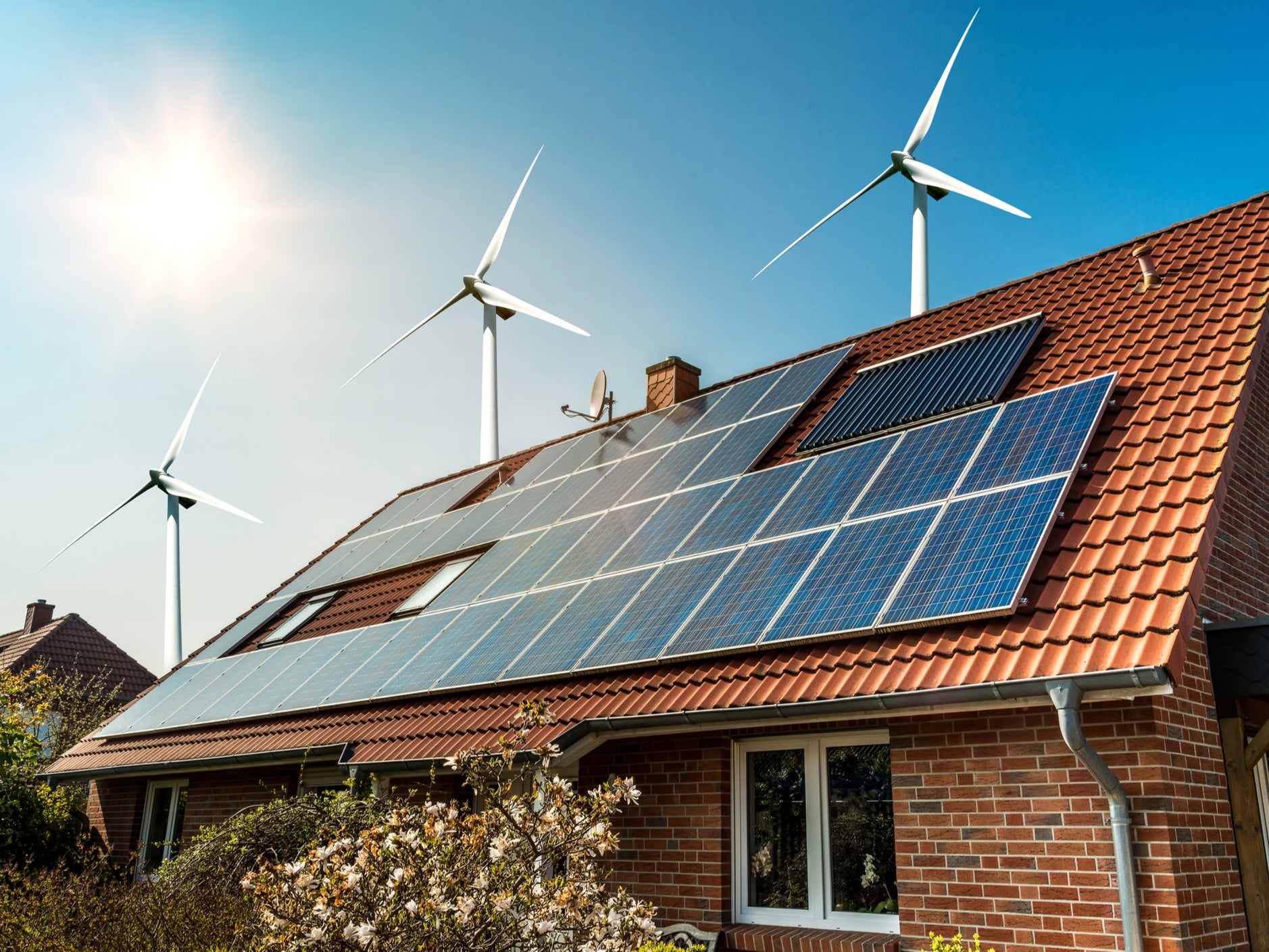My net zero home generates triple the electricity I use – here’s how
I refuse to help fund this toxic legacy for future generations to clean up, writes Donnachadh McCarthy

My home energy use has been net carbon negative for over a decade. But last week it became actual zero-carbon, not just net zero-carbon or net carbon negative, for the first time since I was one of the first homes in London to install solar electric panels in 1998.
But I should explain the jargon first. Being net negative means that when I add up the carbon emissions from gas and electricity, and subtract the emissions from exporting electricity back to the national grid, I had negative carbon emissions.
Net zero means the amount of carbon emitted by my imports is equal to the amount of carbon emissions saved by my solar exports of electricity back to the grid. Even though I exported about three times as much electricity to the grid as I consumed over the years, I had to import grid electricity at night-time. But after installing a second-hand solar battery last week, I now import zero kilowatt-hours of electricity and gas, even at night. I have finally achieved real zero.
When my original solar panels were installed, I used gas for heating and cooking, and the panels supplied electricity for my lighting, fridge and computer etc. I then sought to reduce gas consumption to zero; I only heat the room I am in to a maximum of 18C, and cook as efficiently as I can. I gradually installed solid wall insulation in my 1840’s London terraced home, stuffed the loft with insulation and put in triple-glazed windows.
After about 18 years, the original solar panels were damaged by squirrels, so I upgraded them and tripled the output. I can now usually heat my office with an ultra-low watt eco-tube using 160 watts. If it is extra cold, I use a 560-watt infrared panel heater. I usually run the eco-tube from the solar panels during the day and the insulation retains the heat in the evening.
Then I discovered low wattage kettles and electric hot-plates that can operate on the lower wattage produced by the roof. This enabled me to get to zero gas consumption and so last year I got my gas connection removed. Thus, I do not pay a gas standing charge or for boiler maintenance, which will help recoup the money spent on the battery.
But when I heard the chancellor was imposing another nuclear surcharge on our energy bills, I decided to try to eliminate my night-time electricity imports. I refuse to help fund this toxic legacy for future generations to clean up. I bought the solar battery to store excess electricity from during the day, so I can also be solar powered at night. In the first week after it was installed, my statistics were:
Solar roof produced: 62 kwh
Of which I consumed: 17 kwh
I exported to national grid: 45 kwh
Imported electricity: 0 kwh
Thus, I produced 3.5 times more electricity than I consumed, while importing no gas or electricity, thus helping to reduce gas imports from Russia.
My solar panels, with the help of the battery, covered all my cooking, lighting, fridge, laptop, e-bike charging, washing and infraredheating, even when I had some friends around.
It will be interesting to see how many days in winter, the solar battery will be able me to keep me solar powered at night. My hunch is that it will do so for about ten months and will need some grid back-up in the final two.
Getting to zero carbon, net zero or net negative all involve what I call the 50:30:20 equation. About 50 per cent of my carbon reduction comes from being efficient with energy usage. It saves money and costs nothing. 30 per cent came from installing wall, roof, floor insulation and an energy efficient fridge, lighting etc. It involved low to high investment costs. It saves money but repayment times vary depending on item invested in.
The last 20 per cent came from renewables and storage. This has a high investment cost for the average home of about £8,000, but repays itself in about eight to 14 years.
To keep up to speed with all the latest opinions and comment, sign up to our free weekly Voices Dispatches newsletter by clicking here
I have mainly been able to afford these investments, mainly by choosing not to own a car and investing the capital instead in my dream of a zero-carbon home. But those who can afford it, should not think in terms of financial payback, but in knowing they are fulfilling a moral imperative in the climate crisis.
Rich homeowners and all relevant commercial buildings should be required to install solar panels. And Rishi Sunak should fund solar power and insulation for all social housing, permanently tackling cost of living and eliminating carbon emissions, rather than pouring more billions into fossil fuelled destruction.
If only we had a chancellor committed to taking serious action against the climate crisis.
Subscribe to Independent Premium to bookmark this article
Want to bookmark your favourite articles and stories to read or reference later? Start your Independent Premium subscription today.

Join our commenting forum
Join thought-provoking conversations, follow other Independent readers and see their replies